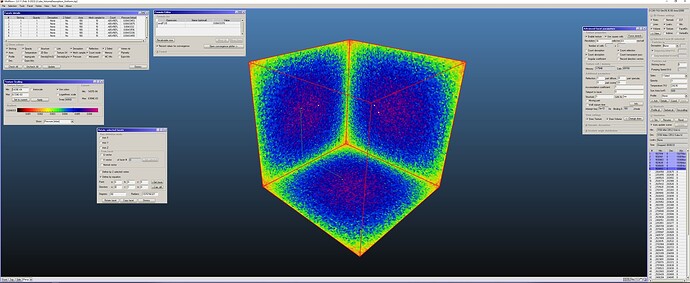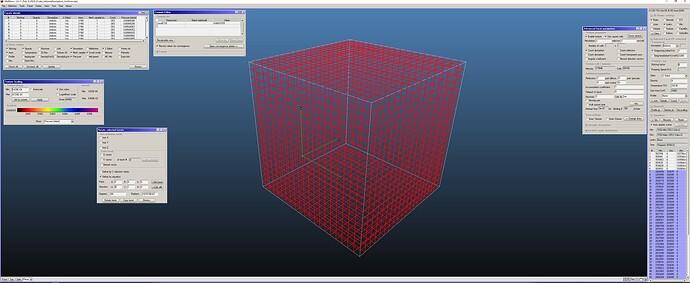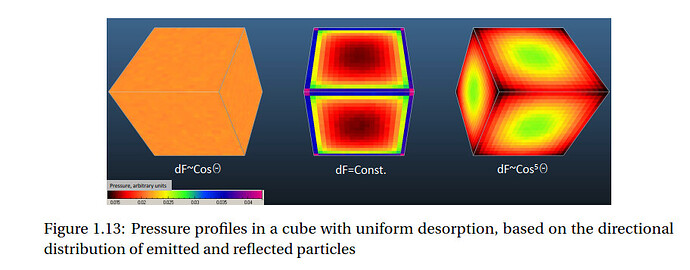Recently, I am studying the Molflow software. It is an excellent tool for the gas Monte Carlo simulation.
Since I am not study the outgassing event, I have one question about the Particle generation.
It seems like that all particles come from the facets. Can these particles be generated from the volume? For example, the target body is a cube with 111 m^3, I want the initial positions of the particles are random distributed in the volume (not including the facets).
Can Molflow deal with this situation?
Thanks for any feedback.
Hello:
there is a way to do that, as you can see in the figure I’m attaching. I’ve created a cube, 10cm edge, with sticky walls (1.0E-3 stick. coeffic.). No desorption from the side walls.
I have then copied one square facet, no.1, and moved it by +5 cm in the Z direction. I have set desorption from it, cosine-like, 2-sided (so it generates molecules on both sides), and more importantly I’ve set its opacity=0, so it will only generate molecules but not get collisions from them.
If you want to generate the molecules uniformly over the whole volume, then you should copy/past many of these facets along Z, so that you would generate uniformly in the X and Y directions (because on each facet the position could be anywhere on the square) but discretized in Z (depending how may facets you copy/paste. So, it would not be perfectly uniform volumetric distribution, but for a simple geometry you could copy/paste many facets at a very small distance from each other in Z, so that the discretization is very close to a uniform distribution.
In the figure I’ve set facet no.7 (the desorbing one) with textures, and the texture type is “desorption”, see little green circles.
In hindsight, I have set the desorption type from facet no.7 as “cosine”, but probably “uniform” would be a better choice (it doesn’t change anything in terms of pressure.
Also, you would need to have desorbing facet also from similar square facets with opacity=0 oriented parallel to YZ and XZ planes too (now they are parallel to XY).
I need to think a bit about this, as I get a pressure on the facets of the cube (the real ones) which is not uniform as I think it should be in case I set sticking=1 on all 6 solid facets.
See figures here below, one with the pressure textures on the facets and one showing the desorbing facets (3x19, each spaced 0.5 cm in Z, Y o X).
Maybe my collaborator Marton Ady has some ideas about this…
Thank you much for your help. This method is a good solution to my problem. If the CAD model is complex, we need to generate many facets.
There is another problem I want to ask.
If I want to keep the number of particles as a constant, i.e., there is no extra particles in or out of this volume. What should I do? I have tried to set the outgassing as 0, but I do not know how to set the initial number of particles.
Thank you.
Replying to Roberto:
If you desorb from a surface (so not a tiny point source), the desorption distribution needs to be “cosine” for uniform pressure on the walls. It seems counterintuitive, but the underlying explanation is that every point of the desorbing facet represents a point in the volume, where the directionality is cosine (not to be confused with the pressure, which in turn is uniform).
In the picture below you can see “edge effects” of non-cosine distributions. (There is a small difference as the figure desorbs from the walls, not to the walls)
All Molflow static simulations keep the number of particles constant (otherwise pressure would be 0 or infinity). The outgassing and the sticking particle rates are the same (except when there are leaks in the geometry).
If you want to inject a given number of particles to a volume, stop outgassing and wait until they thermalize, you need to do a time-dependent simulation.



